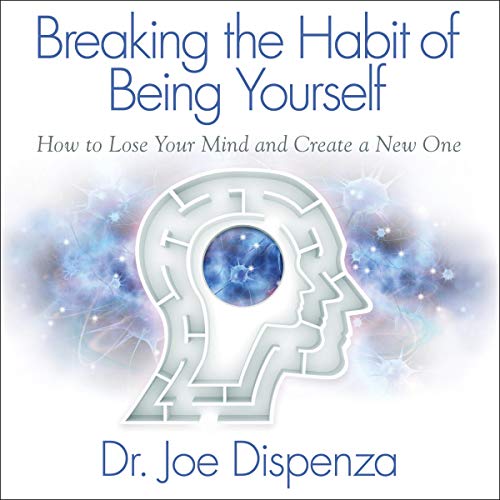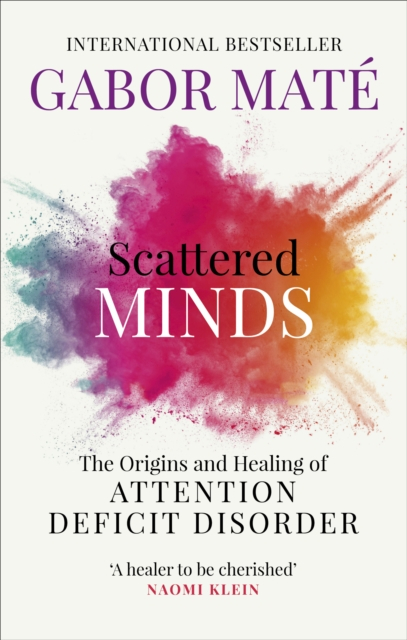
Evolve Your Brain: The Science of Changing Your Mind
I invite you to have a single thought, any thought. Whether your thought was related to a feeling of anger, sadness, inspiration, joy, or even sexual arousal, you changed your body. You changed you. All thoughts, whether they be ‘I can’t,’ ‘I can,’ ‘I’m not good enough,’ or ‘I love you,’ have similar measurable effects. As you sit casually reading this page, not lifting a single finger, bear in mind that your body is undergoing a host of dynamic changes. Triggered by your most recent thought, did you know that suddenly, your pancreas and your adrenal glands are already busy secreting a few new hormones? Like a sudden lightning storm, different areas of your brain just surged with increased electrical current, releasing a mob of neurochemicals that are too numerous to name. Your spleen and your thymus gland sent out a mass e-mail to your immune system to make a few modifications. Several different gastric juices started flowing. Your liver began processing enzymes that were not present moments before. Your heart rate fluctuated, your lungs altered their stroke volume, and blood flow to the capillaries in your hands and feet changed. All from just thinking one thought. You are that powerful.
But how are you capable of performing all of those actions? We can all intellectually understand that the brain can manage and regulate many diverse functions throughout the rest of the body, but how responsible are we for the job our brain is doing as CEO of the body? Whether we like it or not, once a thought happens in the brain, the rest is history. All of the bodily reactions that occur from both our intentional or unintentional thinking unfold behind the scenes of our awareness. When you come right down to it, it is startling to realize how influential and extensive the effects of one or two conscious or unconscious thoughts can be.
For example, is it possible that the seemingly unconscious thoughts that run through our mind daily and repeatedly create a cascade of chemical reactions that produce not only what we feel but also how we feel? Can we accept that the long-term effects of our habitual thinking just might be the cause of how our body moves to a state of imbalance, or what we call disease? Is it likely, moment by moment, that we train our body to be unhealthy by our repeated thoughts and reactions? What if just by thinking, we cause our internal chemistry to be bumped out of normal range so often that the body’s self-regulation system eventually redefines these abnormal states as normal, regular states? It’s a subtle process, but maybe we just never gave it that much attention until now. My wish is that this book will offer a few suggestions for managing your own internal universe.
Since we are on the subject of attention, now I want you to pay attention, become aware, and listen. Can you hear the hum of the refrigerator? The sound of a car passing by your home? A distant dog barking? How about the resonance of your own heart beating? Just by shifting your attention in those moments, you caused a power surge and voltage flux of electricity in millions of brain cells right inside your own head. By choosing to modify your awareness, you changed your brain. Not only did you change how your brain was working moments before, but you changed how it will work in the next moment, and possibly for the rest of your life.
As you return your attention to these words on this page, you altered blood flow to various parts of your brain. You also set off a cascade of impulses, rerouting and modifying electrical currents to different brain areas. On a microscopic level, a multitude of diverse nerve cells ganged up chemically to ‘hold hands’ and communicate, in order to establish stronger long-term relationships with each other. Because of your shift in attention, the shimmering three-dimensional web of intricate neurological tissue that is your brain is firing in new combinations and sequences. You did that of your own free will, by changing your focus. You quite literally changed your mind.
As human beings, we have the natural ability to focus our awareness on anything. As we will learn, how and where we place our attention, what we place our attention on, and for how long we place it ultimately defines us on a neurological level. If our awareness is so mobile, why is it so hard to keep our attention on thoughts that might serve us? Right now, as you continue to concentrate and read this page, you might have forgotten about the pain in your back, the disagreement you had with your boss earlier today, and even what gender you are. It is where we place our attention and on what we place our attention that maps the very course of our state of being.
For example, we can, in any given moment, think about a bitter memory from our past that is only tattooed in the intimate folds of our gray matter and, like magic, it comes to life. We also have the option of attending to future anxieties and worries that do not readily exist until they are conjured up by our own mind. But to us, they are real. Our attention brings everything to life and makes real what was previously unnoticed or unreal.
Believe it or not, according to neuroscience, placing our attention on pain in the body makes pain exist, because the circuits in the brain that perceive pain become electrically activated. If we then put our full awareness on something other than pain, the brain circuits that process pain and bodily sensations can be literally turned off―presto, the pain goes away. But when we look to see whether the pain is gone for good, the corresponding brain circuits once again activate, causing us to feel the discomfort return. And if these brain circuits repeatedly fire, the connections between them become stronger. Thus by paying attention to pain on a daily basis, we are wiring ourselves neurologically to develop a more acute awareness of pain perception, because the related brain circuits become more enriched. Your own personal attention has that much of an effect on you. This could be one explanation to how pain, and even memories from our distant past, characterize us. What we repeatedly think about and where we focus our attention is what we neurologically become. Neuroscience finally understands that we can mold and shape the neurological framework of the self by the repeated attention we give to any one thing.
Everything that makes us up, the ‘you’ and the ‘me’―our thoughts, our dreams, our memories, our hopes, our feelings, our secret fantasies, our fears, our skills, our habits, our pains, and our joys―is etched in the living latticework of our 100 billion brain cells. By the time you have read this far in the book, you have changed your brain permanently. If you learned even one bit of information, tiny brain cells have made new connections between them, and who you are is altered. The images that these words created in your mind have left footprints in the vast, endless fields of neurological landscape that is the identity called ‘you.’ This is because the ‘you,’ as a sentient being, is immersed and truly exists in the interconnected electrical web of cellular brain tissue. How your nerve cells are specifically arranged, or neurologically wired, based on what you learn, what you remember, what you experience, what you envision for yourself, what you do, and how you think about yourself, defines you as an individual.
You are a work in progress. The organization of brain cells that makes up who you are is constantly in flux. Forget the notion that the brain is static, rigid, and fixed. Instead, brain cells are continually remolded and reorganized by our thoughts and experiences. Neurologically, we are repeatedly changed by the endless stimuli in the world. Instead of imagining nerve cells as solid, inflexible, tiny sticks that are assembled together to make up your brain’s gray matter, I invite you to see them as dancing patterns of delicate electric fibers in an animated web, connecting and disconnecting all the time. This is much closer to the truth of who you are.
The fact that you can read and comprehend the words on this page is due to the many interactions you have had throughout your life. Different people taught you, instructed you, and essentially changed your brain microscopically. If you accept this notion that your brain is still changing as you read these pages before you, you can easily see that your parents, teachers, neighbors, friends, family, and culture have contributed to who you are presently. It is our senses, through our diverse experiences, that write the story of who we are on the tablet of our mind. Our mastery is being the fine conductor of this remarkable orchestra of brain and mind; and as we have just seen, we can direct the affairs of mental activity.
Now, let’s change your brain a little further. I want to teach you a new skill. Here are the instructions: Look at your right hand. Touch your thumb to your pinky finger, and then touch your thumb to your index finger. Next, touch your thumb to your ring finger, and then touch your thumb to your middle finger. Repeat the process until you can do it automatically. Now do it faster and make your fingers move more rapidly without mistake. Within a few minutes of paying attention, you should be able to master the action.
To learn the finger movements well, you had to rise out of your resting state, from relaxing and reading to a heightened state of conscious awareness. Voluntarily, you perked up your brain a little; you increased your level of awareness by your intentional free will. To succeed in memorizing this skill, you also had to increase your brain’s level of energy. You turned up the dimmer switch to the light bulb in your brain that is constantly on, and it got brighter. You became motivated, and your choice to do this made your brain turn on.
Learning and performing the activity required you to amplify your level of awareness. By increasing blood flow and electrical activity to different areas in your brain, you could stay more present with what you were doing. You kept your brain from wandering to any other thought so that you could learn a new action, and that process took energy. You changed the way the arrangement of millions of brain cells fired in diverse patterns. Your intentional act took will, focus, and attention. The end result is that you are once again neurologically changed, not only by thinking a thought but also by demonstrating an action or a new skill.
In a moment, I want you to close your eyes. This time, instead of physically demonstrating the finger exercise, I want you to practice doing that same action in your mind. That is, remember what you did just moments before and mentally touch each finger the way I asked you to earlier: thumb to pinky finger, thumb to index finger, thumb to ring finger, and thumb to middle finger. Mentally rehearse the activity without physically doing it. Do it a few times in your mind, and then open your eyes.
Did you notice that while you were practicing in your mind, your brain seemed to imagine the entire sequence just as you actually did it? In fact, if you paid full attention to what you were rehearsing in your mind’s eye by focusing on mentally practicing those finger actions, you fired the same set of nerve cells in the same part of your brain as if you were actually doing them. In other words, your brain did not know the difference between your doing the action or your remembering how to do the action. The act of mental rehearsal is a powerful way you can grow and mold new circuits in your brain.
Recent studies in neuroscience demonstrate that we can change our brain just by thinking. So ask yourself: What exactly do you spend most of your time mentally rehearsing, thinking about, and finally demonstrating? Whether you consciously or unconsciously fabricate your thoughts and actions, you are always affirming and reaffirming your neurological self as ‘you.’ Keep in mind that whatever you spend your time mentally attending to, that is what you are and what you will become. My hope is that this book will help you to understand why you are the way you are, how you got this way, and what it takes to change who you are through your intentional thoughts and actions.
You may ask at this point, What is it that allows us to voluntarily modify how the brain works? Where does the ‘you’ exist, and what allows you to turn on and off different brain circuits that then make you aware or unaware? The ‘you’ I’m talking about lives in a part of the brain called the frontal lobe, and without the frontal lobe, you are no longer ‘you.’ In evolution, the frontal lobe has been the last part of the brain to develop, just behind the forehead and right above the eyes. You hold the image of yourself in the frontal lobe, and what you hold in this special place determines how you interact in the world and perceive reality. The frontal lobe controls and regulates other, older parts of the brain. The frontal lobe navigates your future, controls your behavior, dreams of new possibilities, and guides you throughout life. It is the seat of your conscience. The frontal lobe is evolution’s gift to you. This brain region is most adaptable to change and is the means by which you evolve your thoughts and actions. My desire is that this book helps you to use this newest, most recent part of your brain’s anatomy to reshape your brain and your destiny.
Other Books From - Favorites
About the author
[books_gallery_author author="Dr. Joe Dispenza"]Other Books By - Dr. Joe Dispenza
Back
 The 5 Love Languages
The 5 Love Languages  The Four Agreements
The Four Agreements  Fast. Feast. Repeat.: The Comprehensive Guide to Delay, Don’t Deny Intermittent Fasting
Fast. Feast. Repeat.: The Comprehensive Guide to Delay, Don’t Deny Intermittent Fasting  Breaking the Habit of Being Yourself
Breaking the Habit of Being Yourself  The Power of Now
The Power of Now  The Prophet
The Prophet  Scattered Minds
Scattered Minds  You are the Placebo
You are the Placebo